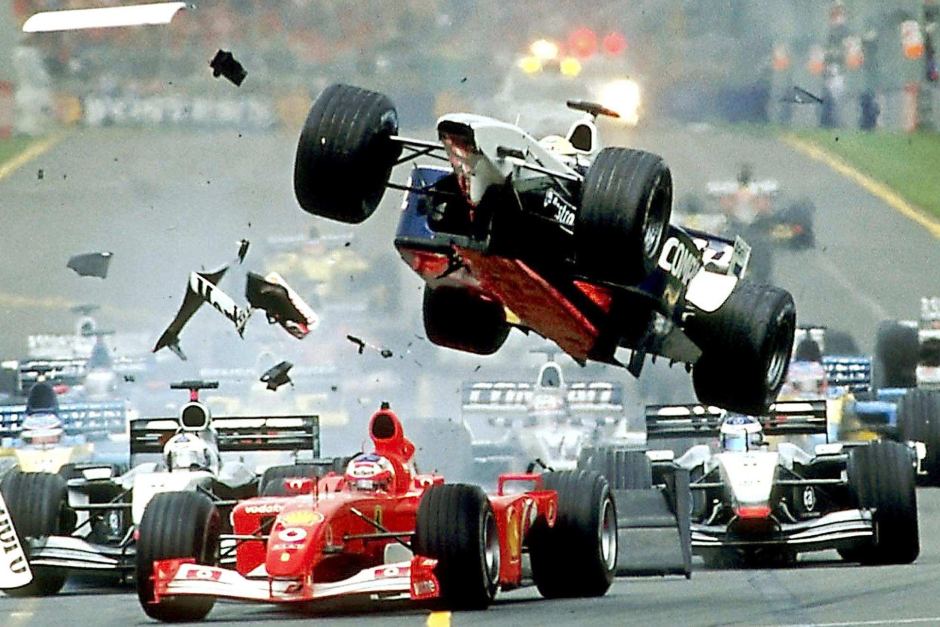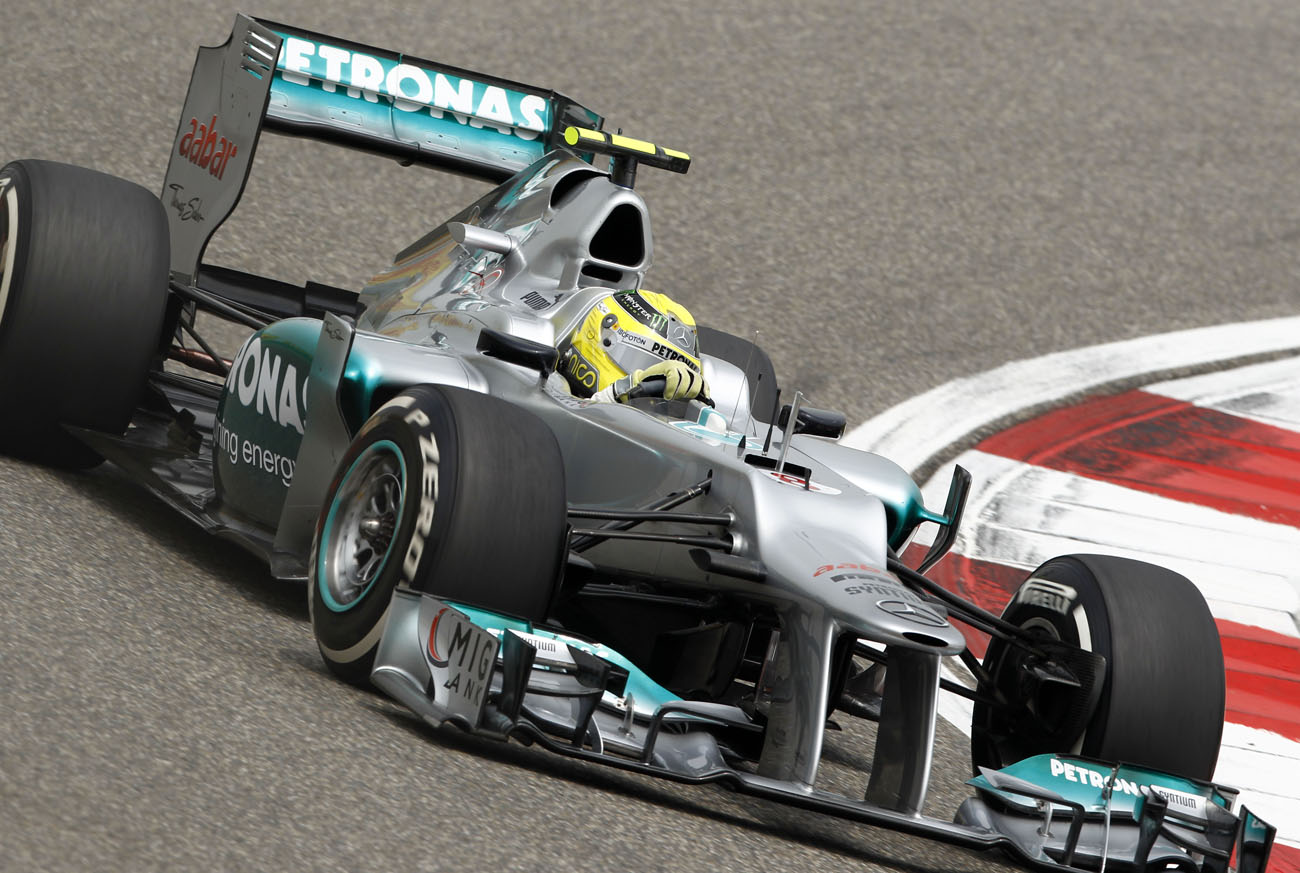Effective 21st Century Safety Measures Of Formula One
Back then, during the 1960s, officials and other experts in Formula One have decided to create a lot of safety measures already. Note that these range from the usage of fuel in order to prevent severe burning and explosions, fixing electric circuits to make it more stable even when at very high speeds, up to providing a better way to control the speeds when slowing down in order to assure safety. However, these safety measures were not yet enough since there were still a lot of notable accidents that ruined the careers of other racers during those dire times.

Image Source: http://www.abc.net.au/news/2015-03-12/5-memorable-moments-in-melbournes-grand-prix-history/6278260
One notable incident during those improvements was the death of Ayrton Senna in 1994 where his car was very unstable to the point where he lost control of the car at 190mph. This caused his vehicle to jump the curve and went slamming towards the concrete wall. He was able to actually lower the speed of the car to 130mph, but the impact was just too much. Before the end of the race, he died. This caused stricter precautions in Formula One, as well as caused researchers to study more about improving the safety of the vehicles for the following years to come.
Remember that our modern era demands a lot of safety precautions in a lot of things, and this has finally included Formula One so then it will become a more appealing sport to everyone and for the future generations. Here is the timeline of improvements made for the sake of a safe Formula One racing:
2000
The impact speed for the crash tests was raised from 13 to 14 meters per second. Due to this raise in their crash tests, the carbon fibers of the cockpit walls were raised from 2.5mm to 3.5mm in order to provide more penetration at 14 to 15 meters per second. The bar for the roll-over above the head of the driver was also changed to 70 millimeters – a huge change from the previous 50 millimeters – that can withstand 2.5 tons of force. This also caused researchers and other experts to notice a drastic change in the safety measures needed since that single 1 meter was enough to make a lot of possibilities already.
2001
In terms of the rules, they also made another change: the blue flag. This rule means that the drivers must allow the racecars behind them to pass over once the blue flag is shown for the third time around. If this is not followed, a stop and go penalty for ten seconds will be provided to the racers. This is due to the fact that premature starting during the past years caused other racing events to turn into a mayhem due to misunderstanding and a lot of car pile-ups and melees. This provided better protection for the marshals as well. Other than that, headrests are mounted to assure more safety, as well as making the drivers’ cockpit walls rise at the rear at least 15 – 16 degrees. They also tested lateral impact at 10 meters per second.
2002
An additional rule was also applied: players will get a time penalty to those who trigger a false start or even cause an accident that can turn into a collision. The time penalty was also provided to those who force other drivers to go off-track, impede another driver who is attempting to overtake, and also to those who fail to follow the third blue flag. This time penalty rule was also aplied for those who are exceeding the speed limit at the pit area. Aside from that, crash tests were increased for the rear part of the cars. 40kN for 30 seconds was a measurement implemented for the force of the impact in order to see if there are deformations. The rear lights were also lengthened to six by six centimeters.
2003
The change made here was for the circuits. A lot of those went reconstruction before the season even began in order to provide a new and fresh start for the racers – which they found very convenient. Other run off areas were also upgraded into asphalt for better tire grip when running fast. Chicanes were revised, run-off areas and safety walls were enlarged to avoid melee and collisions, and pit exit lanes were provided with more safety features. The HANS system was also provided as a requirement for all drivers who will compete.
2004
Some racetracks were provided with a garage inside the pit lanes in order to assure better safety as the racing commences, especially for the racing team members who were once on the track doing the job. The FIA also implemented a safety measure where driver helmets were checked carefully, and with requirements to see if it’s really safe to use for the drivers.
2005
This time, the padding inside the cockpit of the racers were thickened further to avoid injuries at extreme speeds. Back then it was 75 millimeters but was finally upgraded to 100 millimeters in order to provide lesser injuries when facing impact. The front wings of the cars, body parts and barge boards were also refined with Kevlar coating. This avoids sharp splinters which can injure and damage other cars in the long run, and also provided more durability for the car so then it won’t disintegrate.
2006
Minor changes were only applied for the vehicles. Crash tests were increased towards 15 meters per second to study more possibilities.
2007
A safety rule was added when the safety car is being deployed on the track. Aside from that, other lapped cars positioned on the cars running at the lead can overtake both the car and the safety car. This was implemented in order to prevent the lead driver from being hindered by the other cars during restart; providing better efficiency for all racers. The pit lane was closed, and will be opened once again once the field has been passed through by the safety car.
2006 was a year for further research, and the fruits were finally picked up in this year for the sake of better upgrades. LED was placed to cars, plus it can also transmit flag signals from the marshals right to the drivers. The speed limit of the pit lane was reduced once again to 80 kmph.
2008
A bit of upgrade on the engines were implemented.
2009
New committees were added for the events thanks to the Motor Sport Safety Development Fund of the FIA. This will provide a safety program for new racers, and so as training for officials and circuit safety staffs. This will make Formula One a lot safer than before as the staff and racing teams will be able to guarantee better handling at the racetrack.
2010
Tenured Formula One drivers are being hired to assist stewards in making decisions to prevent further race indicents. There was a panel of four FIA stewards (three for the whole event and one on the local track) that will handle the decision making, and are present during the Grand Prix at all times.
2011
Double diffusers were used in order to reduce the speed of the racecars effectively and in order to handle overtaking in a better way. F-ducts were finally prohibited – this led towards a reduction when downforce happens. The wheels of the cars were also fastened upright with two tethers in order to prevent tires from rolling over the racetrack if an accident happens. Outside mirrors were attached at the sides of the cockpit to make rear viewing better for their needs. The FIA has also implemented smaller dimensions for the roll-over bars in order to create slimmer components for the cars. Helmets were added with tougher strips at the top of the visor – which was vulnerable back then.
2012
Exhaust tailpipes were raised due to the double diffuser disputes done by other racers. Car noses were changed a bit, exotic engines and reactive systems were banned by the FIA. Also, the use of helium on air guns was prohibited. All cars are required to be cleared from crash tests before the pre-season. A time cap of four hours was appled to all races after the long red flag.
2013
Cost-cutting was implemented.
2014
A new car formula was introduced where a V6 engine is in use with 1600cc capacity. The 8-speed gearbox was also added, and must be replaced when it’s at least 2,500 miles on the meter. Penalty points system was introduced, and false camera mountings were banned.
2015
Little improvements done for the car nose.
2016
A superlicense was also implemented for racers that must be eighteen years of age and have already scored 40 points in a feeder series. This was made possible in order to assure that the racer is skilled enough on some events that might be dangerous due to inexperience.

Image Source: https://paul11f1.wordpress.com/2013/02/01/my-top-10-wishes-for-f1-2013/
These rules and various upgrades were the amazing implementations done for the sake of a much safer Formula One racing. Since it’s an extreme sport, expect that accidents may occur, but it was effectively lessened to the point where no deaths are occurring already. It will surely encourage the new generation of racers to join, and will make the racers feel more excited aside from nervous since they know that they are finally safe and sound.

